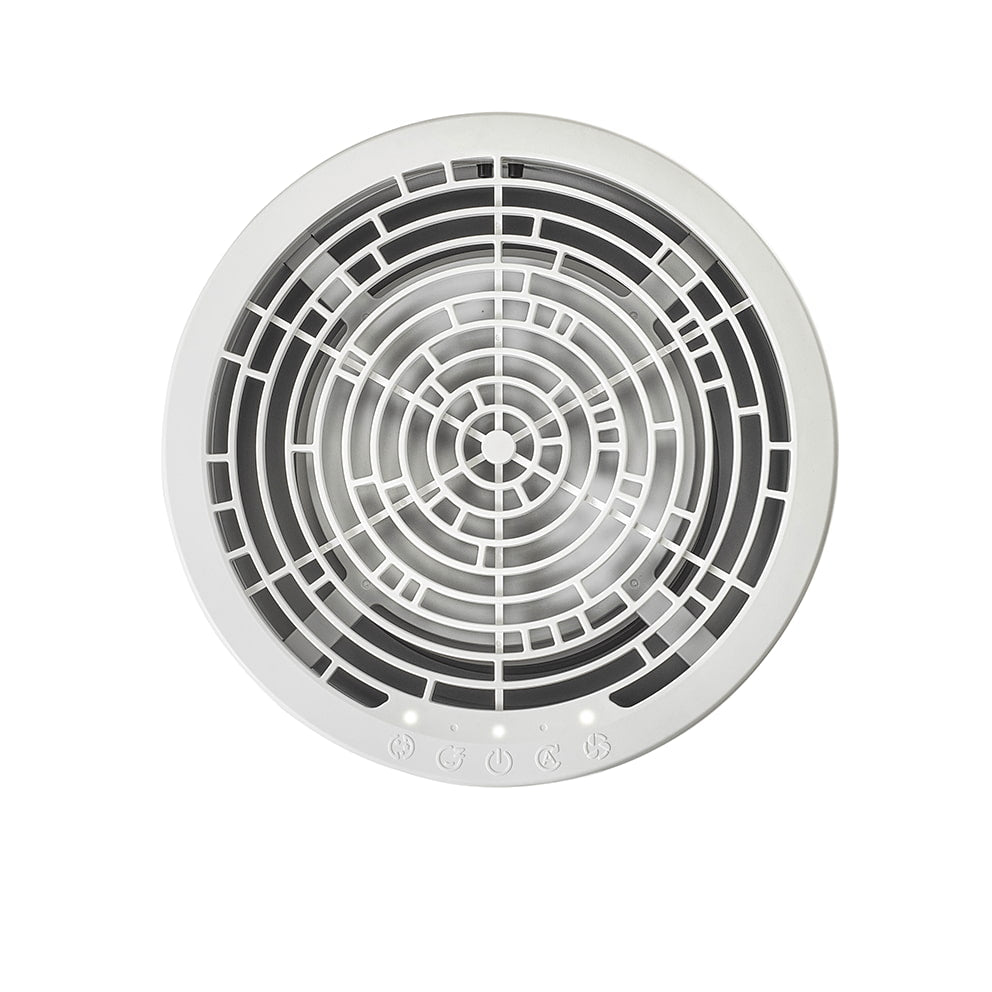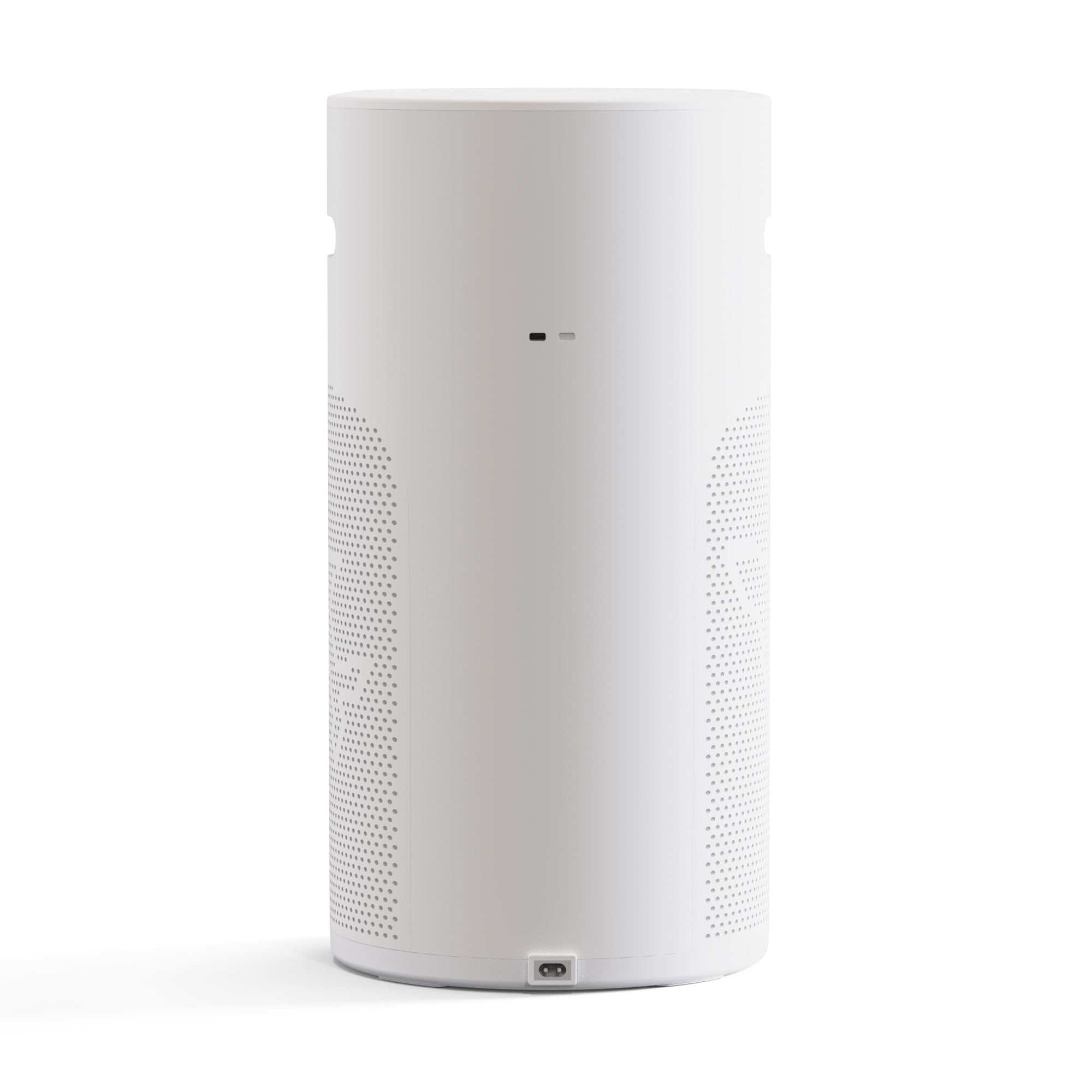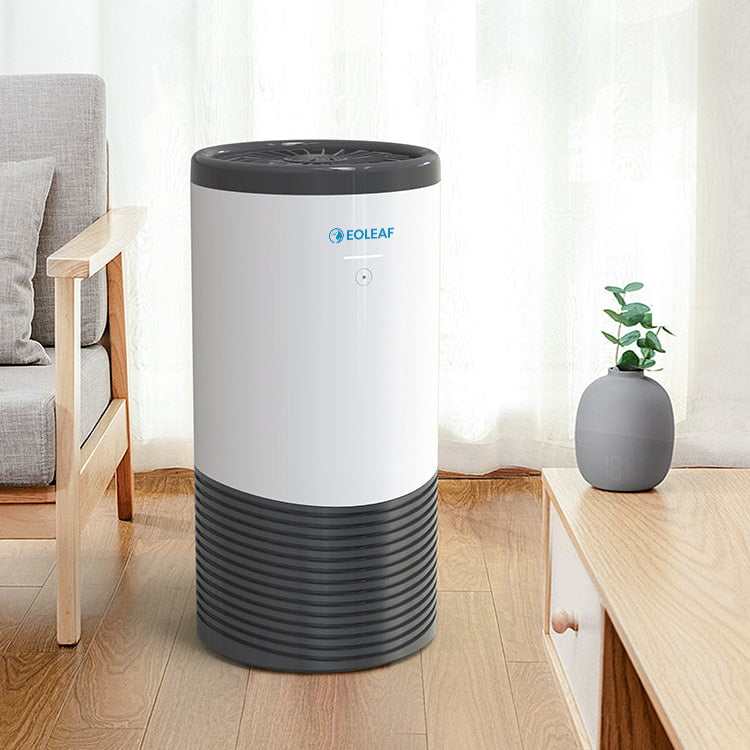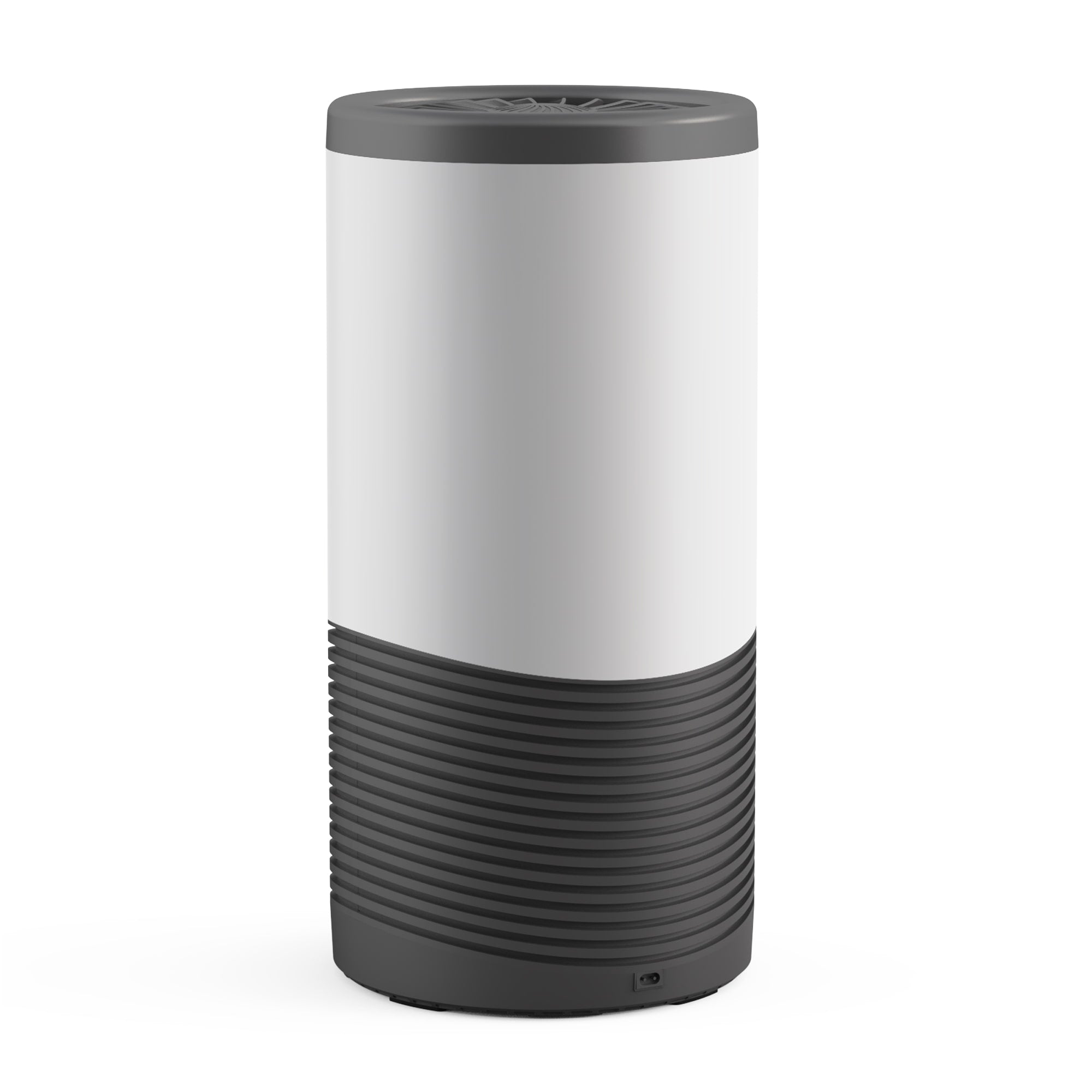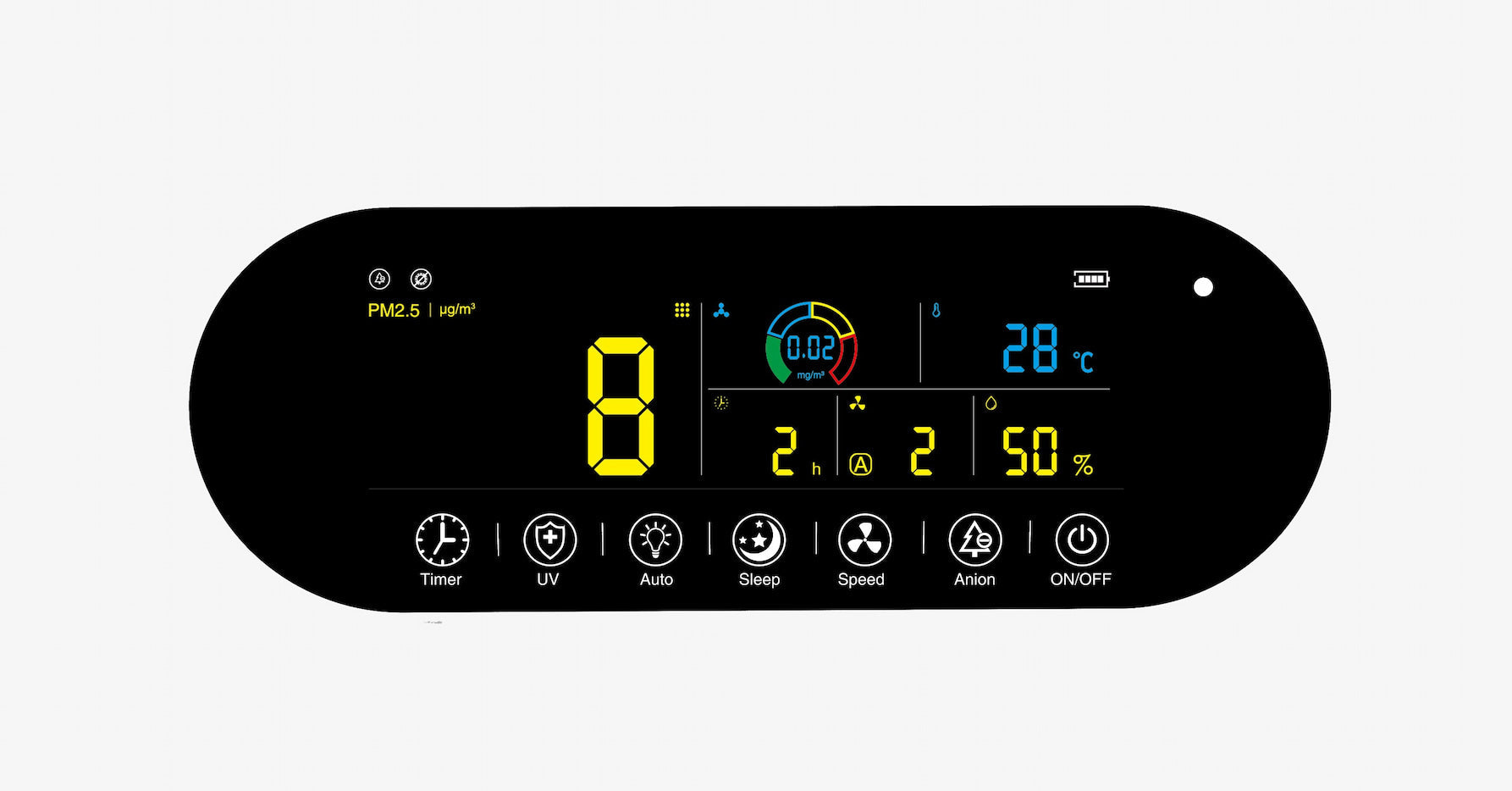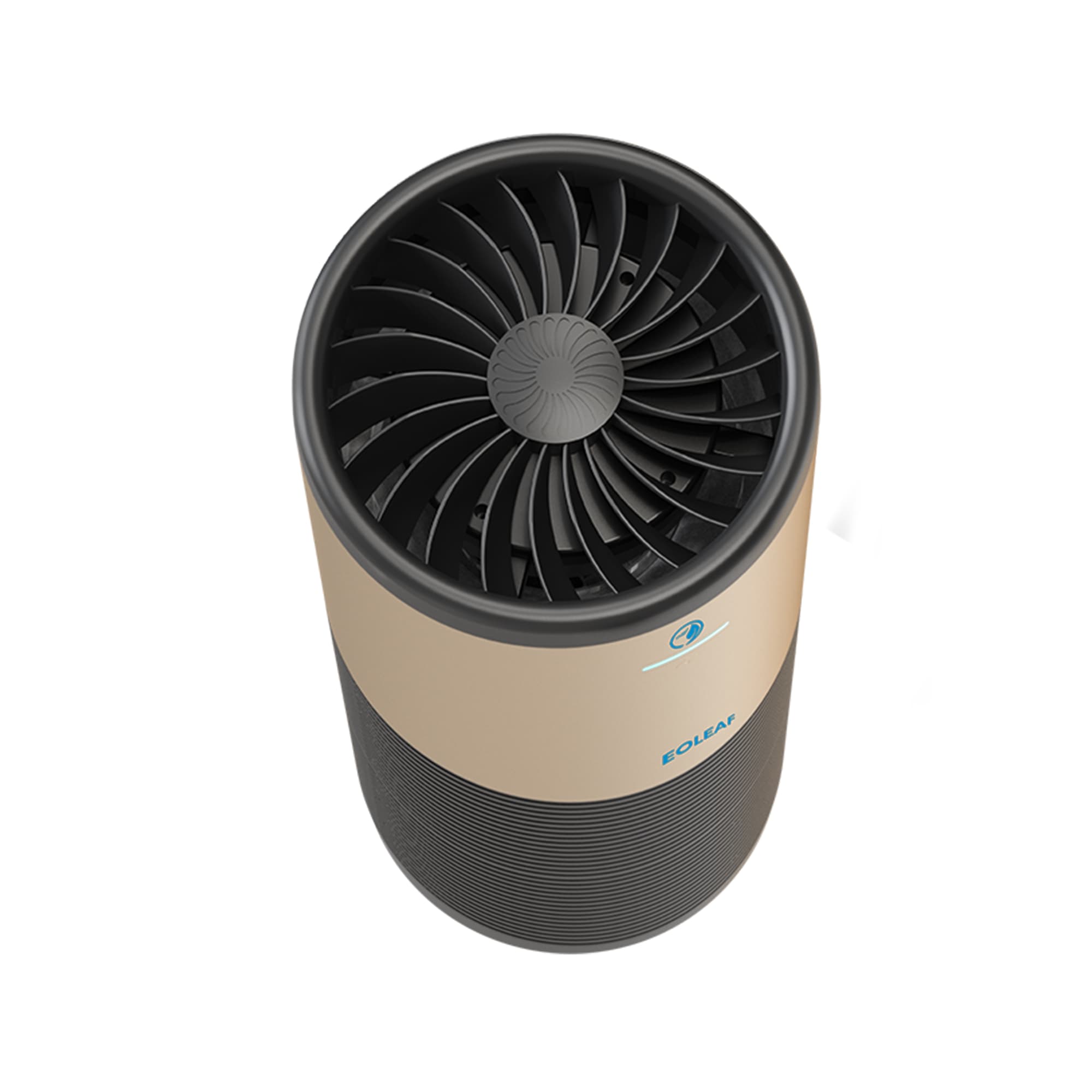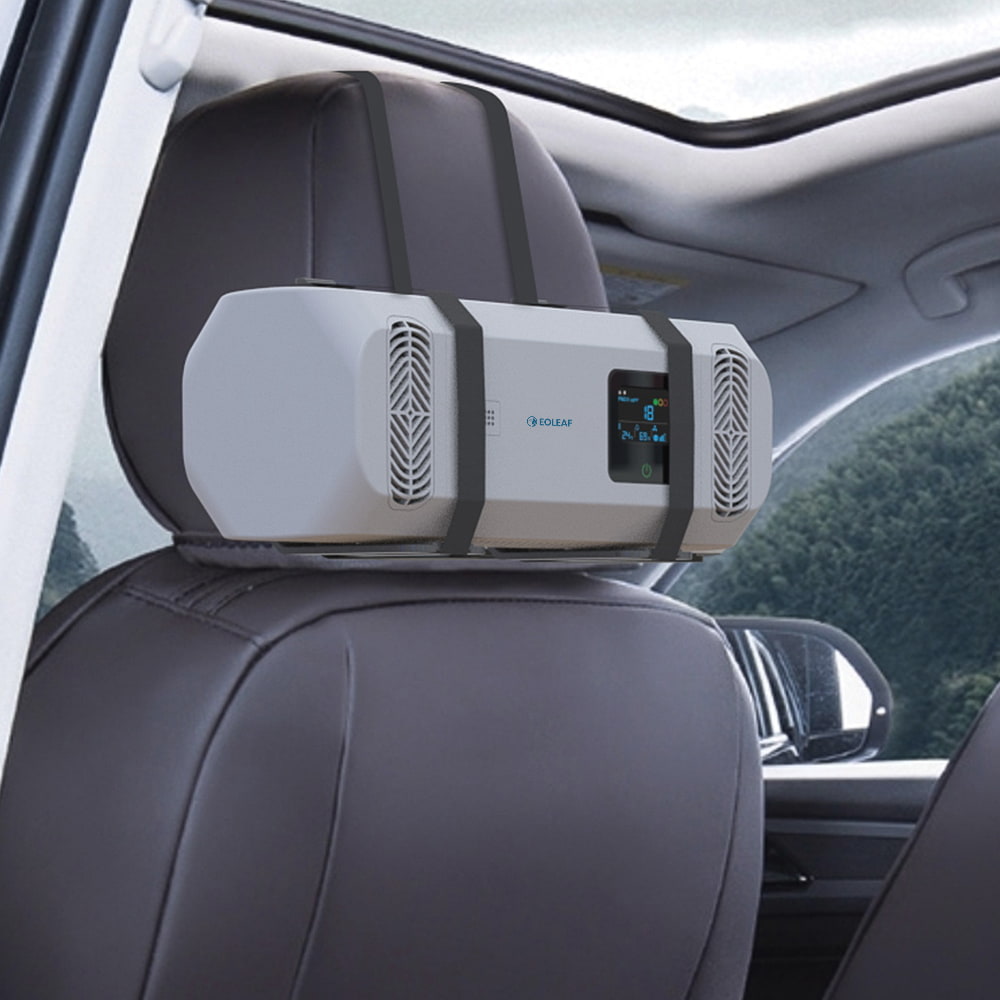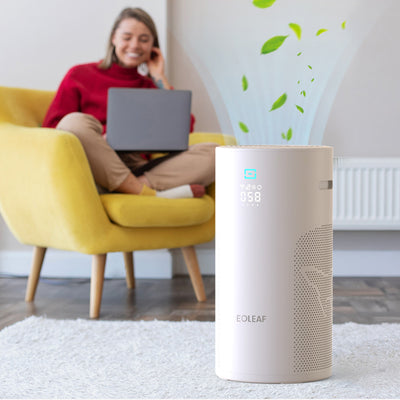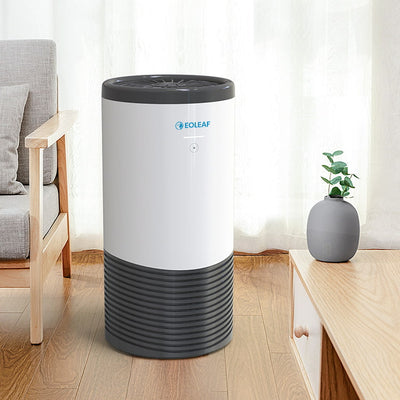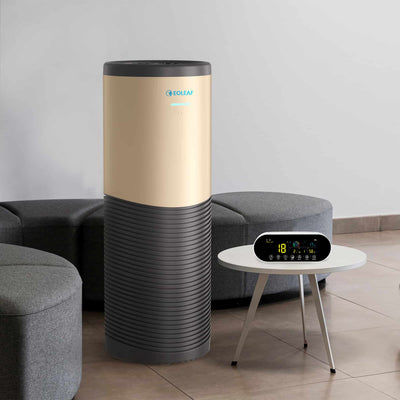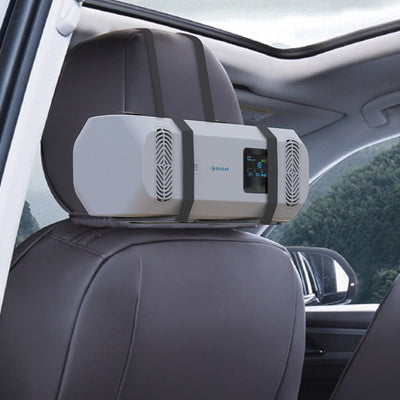Buying an air purifier for chemical sensitivity
Multiple chemical sensitivity (MCS) is a complex disorder that has a physical and mental impact on sufferers. Still not fully understood and under debate by those in the medical field, it is a frustrating and unpleasant disorder that causes general and daily discomfort. What is multiple chemical sensitivity (MCS)? What can preliminary studies tell us about it? Can an MCS air purifier help? Read on to learn more.

What is multiple chemical sensitivity (MCS)?
Understanding multiple chemical sensitivity (MCS)
Definition and symptoms
Multiple chemical sensitivity (MCS), also commonly referred to as idiopathic environmental intolerance (IEI), is a multisystem disorder that arises from exposure to various environmental contaminants like solvents, hydrocarbons, organophosphates, and heavy metals. Adverse health effects are experienced by sufferers even at levels below standard toxic thresholds for the general population1.
It is debated as to whether MCS is a primary medical illness or physical signs of psychiatric illness2. Diagnosing the disease is complex as symptoms are vague and vary significantly from person to person. The following stages of disease progression have been observed:
- Stage 0: Tolerance
- A person is capable of normally adapting to substances in their environment
- Stage 1: Sensitisation
- Occurs as a result of chronic exposure to low concentrations or acute, individual exposure to pollutants
- Symptoms are extremely varied and the following have been reported: respiratory tract and/or dermal irritation, itchiness, fatigue, headache, nausea, joint pain, muscle soreness, blood pressure and/or balance changes, feeling cold or feverish, immune and/or cognitive disorders, and asthma symptoms
- Stage 2: Inflammation
- Occurs in one or several of the body’s different organs, tissues, and systems
- A person may experience dermatitis, allergies, arthritis, colitis, dyspnea, asthma, muscle fatigue, cognitive delays, bleeding, vasculitis, and/or metabolic diseases
- Stage 3: Deterioration
- Chronic inflammation in stage 2 causes damage to organs and tissues
- Damage has been reported in the central nervous system, immune system, kidneys, lungs, liver, vascular system, circulatory system, and dermis

Source 3
Common triggers
People who experience MCS are triggered by everyday products and chemicals, even after low-level exposure. Some examples of triggers include:
- Smoke
- Perfumes
- Air fresheners
- Cleaning products
- Paints
- Glues
- Pesticides
- Non-stick agents
- Radon
- Emissions from pressed wood products3
Who is affected?
It is estimated that 1 in 5 primary care patients experience MCS. According to a 2012 study, 20.3% of study participants met criteria for chemical intolerance or sensitivity. MCS often occurs alongside other diseases and disorders, especially Parkinson’s disease, ulcerative colitis, asthma, chronic migraines, autism, multiple sclerosis, and more. Additionally, higher rates of comorbid allergies have been reported amongst MCS sufferers, as well as higher rates of depression, anxiety, panic disorder, and alcohol abuse disorder. MCS also leads many individuals to avoid potential chemical, dietary, and drug triggers, causing an increase in stress and a decreased quality of life4.
Air pollution and multiple chemical sensitivity
Although MCS remains a controversial condition, studies have begun to try to understand the link between MCS and air pollution. Exposure to agents that trigger or cause MCS are found in food, water, and the air. A study dating back to 2005 in Italy found that there is an ‘explicit correlation’ between air pollution exposure, especially to air pollutants containing heavy metals like cadmium, mercury, arsenic, nickel, and lead (common pollutants emitted as a result of road transport and industrial processes). Heavy metals cause bioaccumulation in the human body, increasing in concentration over time. This has a profound effect on human biochemistry, and this correlation has shown an increased likelihood of developing a ‘cascade of chronic events and illnesses’, including MCS5.

How indoor air becomes contaminated with harmful chemicals
Chemicals of all types are emitted into our indoor air on a daily basis. Some of these pollutants are generated outdoors, typically by road traffic and industrial manufacturing, making their way indoors when windows and doors are opened. These pollutants then become trapped indoors when windows and doors are closed again, ultimately leading to an unhealthy accumulation that users of these indoor spaces or rooms inhale on a constant basis. Typically, these types of pollutants fall under the fine particle pollution category, though they also include volatile organic compounds (VOCs) and heavy metals as mentioned above.
There are also pollutants that are generated indoors. Everyday products like cleaning agents, air fresheners, fragrances, pesticides, candles, paints, glues, and other DIY products all release volatile organic compounds (VOCs) into our indoor air. Additionally, indoor air pollution is generated when we cook, purchase new furniture or furnishings (which leads to off-gassing), and heat our households with wood or gas. Furthermore, humidity is classified as an indoor air pollutant, and it can lead to the development of airborne mould spores, another indoor air pollutant that is dangerous to our health. Read more about the sources of indoor air pollution here.
The benefits of Eoleaf air purifiers:
-
Quiet yet powerful devices (up to 670 m3/hr)
-
Discreet and elegant design
-
Easy to use (equipped with Automatic mode) and does not require installation or assembly
-
Can be placed anywhere in your space thanks to our 360° technology
-
Real-time air quality data
-
Filters 99.97% of pollutants using unique and innovative filtration technologies
Why standard air purifiers may not be effective for chemical sensitivity
The limitations of conventional HEPA filters
For those with chemical sensitivity, purchasing an air purifier containing only a HEPA-certified or HEPA-type filter will not be sufficient. HEPA-certified filters, though extremely effective at removing fine particle pollution (especially those generated by road traffic or smoke), are not capable of combatting or reducing chemical pollution (including VOCs like formaldehyde, ozone, and carbon monoxide). In order to trap chemical gases for those with chemical sensitivity, it is essential that your air purifier contains technologies that are capable of doing so, like activated carbon filtration and photocatalysis. Eoleaf devices offer both technologies as part of its 8-step air filtration technology.
Alongside our HEPA-certified and heavy activated carbon filter layers, Eoleaf devices also offer 6 other filtration technologies, each of which target a different type of indoor air pollution. Eoleaf air purifiers offer the most comprehensive air pollution technologies on the market. Read more about our technology here.
The risks of ozone-generating ionisers and ozone generators
Certain devices on the market combat indoor air pollution by releasing ozone, a secondary air pollutant that has negative effects on health and the environment. Outdoors, ozone is created when other air pollutants react with sunlight, but it can also be emitted by ionisers and ozone-generating devices. For those with chemical sensitivity, it is essential to keep this in mind because these types of devices may, in fact, aggravate MCS symptoms rather than helping them seek relief. Not all ionisers do this, however: when seeking out an air purifier for chemical sensitivity, ensure that the device is certified ozone-free. Eoleaf devices serve as 2-in-1 air purifiers/ionisers, but our devices are certified ozone-free.
Ozone is a powerful respiratory irritant, and exposure to ozone leads to respiratory and eye irritation, headaches, coughing, difficulty breathing, chest pain, shortness of breath, aggravation of asthma and other respiratory disease symptoms, and more.

Activated carbon and multi-layer filtration: must-haves for chemical sensitivity
Activated carbon
As previously mentioned, activated carbon is a crucial technology when combatting chemical sensitivity. Carbon has been used for centuries for its water and air filtration efficacy, and activation increases its surface area, further enhancing its filtration properties.
Activated carbon can be made using many different types of natural materials including wood, coffee shells, rice, wheat straw, and corncobs. Here at Eoleaf, our activated carbon is made exclusively using coconut shells. This is the most efficient form of biomass used to create activated carbon because when activated, it creates micropores with a diameter of less than 2 nanometers (compared to wood which creates pores of 50 nanometers). For air purification, pores measuring between 1 and 2 nanometers are the most ideal in order to trap all types of chemical gases, especially VOCs. Activated carbon also combats unpleasant odours!
Other essential technologies for chemical sensitivity
When purchasing an MCS air purifier, investing in a device with a multi-layer filtration technology is of the utmost importance. When multiple technologies are employed, multiple types of air pollution are targeted. Eoleaf’s 8-step air purification technology is unique on the market in that it targets all types of indoor air pollution including fine particles (PM10, PM2.5, and PM0.1), biological pollution (germs like airborne viruses and bacteria and allergens like pollen, dust and dust mites, mould spores, and pet hair and dander), smoke, and, of course, chemical pollution (VOCs, other harmful chemical gases, and unpleasant odours). For individuals with chemical sensitivity, in addition to our heavy, high-quality activated carbon filter layer, there is an additional technology that combats gaseous, chemical pollutants: photocatalysis. Photocatalysis provides another layer of protection against chemical pollutants, particularly nitrogen oxides (NOx), carbon dioxide (CO2), carbon monoxide (CO), and carcinogens like formaldehyde and benzene. For a more complete list, refer to our article on the subject here.
UVC sterilisation
Another technology that sets Eoleaf devices apart, and one that benefits chemically-sensitive individuals and non-chemically-sensitive individuals alike, is UVC sterilisation. This is an essential technology for combatting germs like viruses and bacteria, especially during periods of epidemics or pandemics, but it also serves another very important purpose. When air pollutants in our spaces and rooms are filtered by an air purifier, they do not simply disappear. Pollutants, including contagious airborne viruses and bacteria, remain in your filter until the filter is disposed of and replaced. The spent filter becomes a breeding ground for germs and pollutants that are dangerous to your health. Without UVC technologies, performing regular filter changes becomes an extremely risky task that may re-expose you to the pollutants you previously removed from your indoor space. For individuals purchasing an air purifier for chemical sensitivity, this may serve as another important barrier to protect from chemical recontamination.

Key features to look for in an air purifier for chemical sensitivity
High-quality activated carbon filtration
It cannot be emphasised enough that activated carbon filters vary significantly in quality. That said, it is essential to find a device that offers as much activated carbon as possible (by weight). The more activated carbon a filter contains, the more chemical gases it is able to absorb. Be sure to ask your air purifier’s manufacturer for the activated carbon’s weight before making your purchase. Eoleaf makes all of this information readily available to our customers, and each of our filters contain the following amounts of activated carbon:
- AltaPur 700: 1280 grams
- TeraPur 600: 640 grams
- NeoPur 400: 400 grams
- PurCar: 30 grams
Heavy, high-quality activated carbon filters will absorb all types of chemical pollution and airborne odours. They are particularly efficient in the removal of volatile organic compounds (VOCs). This even includes VOCs that are carcinogenic like formaldehyde and benzene, two components that are found in building materials, cigarette smoke, disinfectants, beauty products, and pesticides, to name a few.
HEPA filtration for particulate matter
Although individuals who are chemically sensitive may be less concerned about fine particles, it is important to note that fine particles may aggravate conditions caused by chemical sensitivity. Those who are chemical sensitive may experience more severe allergies, asthma, fatigue, cognitive disorders, mental health disorders, and respiratory irritation, all of which are aggravated by fine particle exposure. The removal of these particles from the air leads to an improvement in quality of life for those suffering from MCS, and HEPA filters are designed to do just that.
Like activated carbon, HEPA filters also vary significantly in quality. One way to ensure that your HEPA filter has been third-party tested is to ensure that it has been certified. Many air purifier manufacturers will claim that their devices contain ‘HEPA filters’, but without seeing the word ‘certified’ in the technical specifications or in the product description, their HEPA filter’s efficiency cannot be guaranteed. There are also multiple grades of HEPA filtration from H11 to H14. HEPA H13 and H14 filters are both considered to be medical-grade, and all Eoleaf devices contain HEPA H13-certified filters.
How to choose the right air purifier model for your needs
NeoPur 400 luftrenser
40 m² dækningsområde - Smart & Connected
TeraPur 600 luftrenser
80 m² dækningsområde - Ultimativ alt-i-en
AltaPur 700 luftrenser
120 m² dækningsområde - Professionel model
Coverage area and airflow rate (CADR)
In order to ensure effective chemical removal and that your air purifier for chemical sensitivity will treat all the air in your space, be sure to match the air purifier’s coverage area to your space’s surface area. You must also choose a device with an ideal Clean Air Delivery Rate (CADR) to ensure that all of the air in your space will be replaced in a timely manner. The general rule is that the higher the CADR, the more efficient the air purifier. For a more in-depth analysis and explanation, we have created an in-depth guide to help you properly size an air purifier which involves calculating your space’s volume and an ideal CADR here.
Maintenance and filter replacement frequency
All air purifiers require maintenance, usually consisting of filter replacements. The frequency at which the filters must be replaced depends upon the model of air purifier. Lower-quality filters typically require replacing more frequently, usually three or four times per year (every three or four months). Higher-quality filters require changing less frequently. Eoleaf devices are equipped with filters that are built to last and only require replacing once per year (every 12 months on average). Filter changes are incredibly easy to perform, requiring less than a minute and being able to be done by anyone, without a technician.
Budget considerations and lifetime value
As with any solution to a problem, there are many ways to approach it, but you will usually get what you pay for. Inexpensive solutions will likely bring subpar results. Air purifiers are available at all price points, ranging from very cheap to extremely expensive. Cheap air purifiers provide low-quality air purification that rarely tackle chemical pollution, rendering them useless for someone suffering from MCS. For chemically-sensitive individuals, investing in a sturdy, long-term solution like an air purifier for chemical sensitivity is an excellent way to ensure an improvement in quality of life and protect your health. However, there is no need to purchase the most expensive air purifier on the market, either. Do your research on an air purifier’s purification technologies, sizing, and pricing, and make sure that it meets your health and budgetary needs.

Use cases: who needs a chemical-sensitivity-friendly air purifier?
Home environments
Air purifiers are useful in all household environments ranging from large homes to studio flats. Homes that use fragrances, conventional cleaning products, and DIY products and materials benefit greatly from investing in a high-quality air purifier. Air purifiers are also recommended for homes with pets, for those seeking relief from allergies or respiratory symptoms like asthma, and for homes that have young, pregnant, elderly, or immunocompromised inhabitants. They are also particularly helpful in homes that are undergoing renovations or replacing old furniture with new furniture and fixtures, or in new buildings containing new construction materials.
Workspaces, professional settings, schools, and public buildings
Professional spaces experience often invisible, high concentrations of indoor air pollution that negatively impact indoor air quality (IAQ). In offices, just like homes, indoor air pollution is generated by both outdoor (road traffic and industrial practices) and indoor (off-gassing of office equipment, employees bringing in allergens like pollen, dust, mould spores, and pet dander, chemical gases like VOCs) sources. Offices, medical practices and clinics, wellness centres, beauty salons (hair and nail), schools, restaurants, and hotels are just a few examples of professional settings that benefit greatly from purifying the air for the sake of both employees and customers. This is particularly important when the customer base consists of young children, pregnant women, elderly individuals, or immunocompromised individuals.
Eoleaf air purifiers: engineered for sensitive individuals
Multi-stage air purification adapted to chemical sensitivity
Eoleaf devices are built with your health in mind. Whether you are suffering from chemical sensitivity, allergies, asthma, mental health conditions, have just undergone chemotherapy, or are simply looking to protect your general health from the dangers of air pollution and poor air quality, Eoleaf air purifiers are skilled in the removal of even the smallest and most chemically-diverse air pollutants that are harmful to human health. Our 8-step air purification technology is the most extensive indoor air pollution solution on the market, ideal for homes, businesses, and public spaces alike. Thanks to our unique and comprehensive technology, your indoor air is quickly and efficiently rid of fine particles, chemical pollution, and biological pollution (including germs and allergens).
Commitment to non-toxic, sustainable design
Built to last, the aim of our devices is for them to protect your health for many years to come. This is why we use quality materials that do not emit any ozone. Eoleaf also adheres to all of the most recent certifications including:
- ECP ACL Air Cleaners
- Norme NF
- HEPA H13
- CE
- ISO 9001:2015
- RoHS
- Third-party testing by Octopus Lab
Models recommended for multiple chemical sensitivity (MCS)
All Eoleaf devices are designed to help those suffering from MCS and are looking for relief. Our AEROPRO 40, AEROPRO 100, and AEROPRO 150 are all equipped with our 8-step filtration technology. The main differentiating factor between our models is their coverage area. Find a quick summary of our devices below:
- NeoPur 400: ideal for spaces and rooms of up to 40 m2 (450 sq. ft.), this modern device is equipped with smart features that make indoor air quality tracking and purification easy
- TeraPur 600: designed for spaces and rooms of up to 80 m2 (850 sq. ft.), this versatile air purifier is perfect for any space, whether it be for your household or your professional space
- AltaPur 700: perfect for spaces and rooms of up to 120 m2 (1300 sq. ft.), our professional model is designed for large spaces or rooms that require a powerful air purifier in order to remove all indoor air pollutants
- PurCar: our vehicle air purifier made for all vehicle cabins that allows you to protect yourself from air pollution and poor air quality on your journeys

Resources
1 Rossi S, Pitidis A. Multiple Chemical Sensitivity: Review of the State of the Art in Epidemiology, Diagnosis, and Future Perspectives. J Occup Environ Med. 2018 Feb;60(2):138-146. doi: 10.1097/JOM.0000000000001215. PMID: 29111991; PMCID: PMC5794238.
2 Multiple chemical sensitivity. Johns Hopkins Medicine. (2024, July 2). https://www.hopkinsmedicine.org/health/conditions-and-diseases/multiple-chemical-sensitivity
3 Genuis, S. J. (2013). Chemical sensitivity: Pathophysiology or pathopsychology? Clinical Therapeutics, 35(5), 572–577. https://doi.org/10.1016/j.clinthera.2013.04.003
4 Katerndahl DA, Bell IR, Palmer RF, Miller CS. Chemical intolerance in primary care settings: prevalence, comorbidity, and outcomes. Ann Fam Med. 2012 Jul-Aug;10(4):357-65. doi: 10.1370/afm.1346. PMID: 22778124; PMCID: PMC3392295.
5 G. Latini, G. Passerini, R. Cocci Grifoni & M. M. Mariani. WIT Transactions on Ecology and the Environment, Vol 85, ©2005 WIT Press www.witpress.com, ISSN 1743-3541 (on-line).
Eoleafs udvalg af luftrensere
NeoPur 400 luftrenser
40 m² dækningsområde - Smart & Connected
TeraPur 600 luftrenser
80 m² dækningsområde - Ultimativ alt-i-en
AltaPur 700 luftrenser
120 m² dækningsområde - Professionel model
PurCar luftrenser
HEPA H13-filter og ionisator - til alle køretøjer



